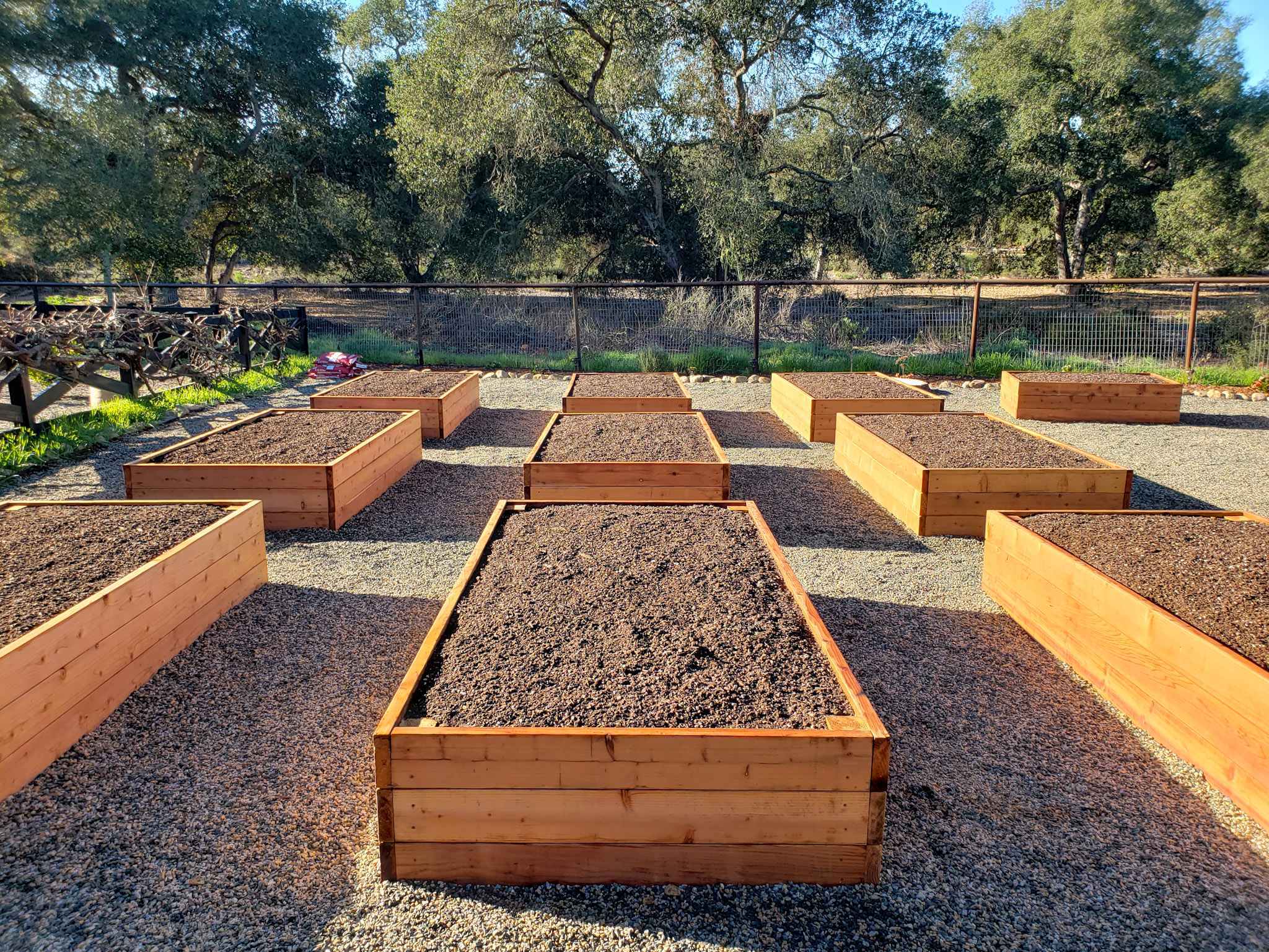Home>Gardening Basics>Understanding Soil>How Much Manure To Add To Soil


Understanding Soil
How Much Manure To Add To Soil
Published: February 8, 2024
Learn how to improve soil fertility by understanding the right amount of manure to add. Enhance your gardening skills with our expert tips on soil management.
(Many of the links in this article redirect to a specific reviewed product. Your purchase of these products through affiliate links helps to generate commission for Chicagolandgardening.com, at no extra cost. Learn more)
Table of Contents
Introduction
Soil is a living, breathing ecosystem that sustains life by providing essential nutrients to plants. However, over time, soil can become depleted, leading to decreased fertility and reduced crop yields. One effective and natural method to replenish and enhance soil health is by adding organic matter, such as manure. The practice of using manure in agriculture dates back centuries and continues to be a valuable technique for improving soil quality.
When considering how much manure to add to soil, several factors come into play, including the nutrient content of the manure, the current state of the soil, and the specific needs of the plants being grown. Understanding these elements is crucial for determining the appropriate amount of manure to apply and ensuring optimal soil fertility.
In this comprehensive guide, we will delve into the intricacies of incorporating manure into soil, exploring the nutrient content of manure, calculating the amount needed for specific soil conditions, proper application techniques, and ongoing soil health monitoring. By the end of this article, you will have a thorough understanding of how to effectively utilize manure to promote vibrant and productive soil.
Understanding the Nutrient Content of Manure
Manure is a valuable source of organic matter and essential nutrients that can significantly benefit soil health. The nutrient content of manure varies depending on the type of animal it originates from, such as cows, pigs, or poultry. Additionally, factors like diet, bedding materials, and storage conditions can influence the composition of manure.
Key nutrients found in manure include nitrogen, phosphorus, potassium, and various micronutrients. Nitrogen is crucial for promoting lush foliage and overall plant growth. Phosphorus supports root development and flowering, while potassium aids in disease resistance and overall plant vigor. Furthermore, manure also contains organic matter, which improves soil structure, moisture retention, and microbial activity.
It is important to note that the nutrient content of manure can vary widely. Fresh manure typically has higher nitrogen levels but may pose a risk of burning plants if not properly aged or composted. On the other hand, well-aged or composted manure may have reduced nitrogen levels but offers a more stable and balanced release of nutrients over time.
Understanding the nutrient content of the specific type of manure being utilized is essential for determining the appropriate application rate and avoiding overloading the soil with certain nutrients. Soil testing and analysis can provide valuable insights into the existing nutrient levels, allowing for precise adjustments when incorporating manure into the soil.
Calculating the Amount of Manure Needed
When determining the amount of manure to add to soil, it is essential to consider the nutrient requirements of the specific plants being grown, the existing nutrient levels in the soil, and the nutrient content of the manure. Calculating the appropriate application rate involves a thoughtful approach to ensure that plants receive adequate nutrients without overwhelming the soil with excessive amounts of certain elements.
Soil testing serves as a foundational step in understanding the current nutrient levels and pH of the soil. This analysis provides valuable data that informs the decision-making process when incorporating manure. By identifying any deficiencies or imbalances, it becomes possible to tailor the application of manure to address specific nutrient needs.
Once the nutrient requirements are established, the nutrient content of the manure must be taken into account. This information can be obtained from laboratory analysis or general guidelines based on the type of animal manure being used. For instance, poultry manure typically has higher nitrogen levels compared to other types, while cow manure may have a more balanced nutrient profile.
Calculating the amount of manure needed involves matching the nutrient content of the manure with the desired nutrient levels in the soil. This process considers factors such as the desired yield of the crop, the nutrient uptake of the plants, and the longevity of the nutrient release from the manure. Utilizing online calculators or consulting with agricultural extension services can aid in determining the appropriate application rate based on these considerations.
It is important to approach manure application with caution, as excessive amounts can lead to nutrient imbalances, environmental pollution, and potential harm to plant health. By carefully calculating the amount of manure needed, growers can optimize soil fertility while minimizing the risk of nutrient overload.
Applying Manure to Soil
Applying manure to soil is a critical step that requires careful consideration of timing, methods, and best practices to maximize its benefits while minimizing potential drawbacks. The application process plays a pivotal role in ensuring that the nutrients in the manure are effectively integrated into the soil, promoting healthy plant growth and sustainable soil fertility.
One of the key considerations when applying manure is the timing in relation to the planting or growing season. Incorporating manure well in advance allows time for the nutrients to gradually become available to plants, reducing the risk of nutrient leaching and potential damage to emerging seedlings. However, for established crops, side-dressing or topdressing with manure during the growing season can provide a supplemental nutrient boost.
The method of application also influences the effectiveness of manure integration. Incorporating manure into the soil through tillage or composting can facilitate the gradual release of nutrients and improve soil structure. Surface application, especially with fresh manure, should be approached cautiously to prevent nutrient runoff and minimize odor concerns. Additionally, incorporating manure with organic mulches or cover crops can enhance nutrient retention and microbial activity in the soil.
Properly composted manure offers the advantage of reduced odors, decreased weed seeds, and improved nutrient availability. Composting manure not only enhances its nutrient content but also reduces the risk of pathogens, making it a safer option for application. When applying composted manure, it is essential to ensure thorough mixing with the soil to maximize nutrient distribution and uptake by plants.
Consideration should also be given to the potential environmental impact of manure application. Adhering to recommended application rates, avoiding application on waterlogged or frozen soil, and complying with local regulations can help mitigate the risk of nutrient runoff and water contamination.
By implementing appropriate application techniques and considering the specific needs of the plants and soil, growers can harness the full potential of manure as a natural and effective soil amendment, contributing to sustainable agricultural practices and vibrant crop production.
Monitoring and Adjusting Soil Health
After incorporating manure into the soil, ongoing monitoring and adjustments are essential to ensure that soil health is optimized and that plants receive the necessary nutrients for robust growth. By implementing proactive measures and responding to changes in soil conditions, growers can maintain a fertile and balanced growing environment.
Regular soil testing is a fundamental practice for monitoring soil health and nutrient levels. Periodic testing provides valuable insights into the soil’s pH, nutrient content, and organic matter levels. By tracking these parameters, growers can assess the impact of manure application and make informed decisions regarding any necessary adjustments.
When interpreting soil test results, attention should be given to the nutrient levels influenced by the added manure. Excessive accumulation of certain nutrients, such as phosphorus, can lead to imbalances and environmental concerns. In such cases, adjusting the application rates of manure or implementing targeted nutrient management strategies becomes crucial for maintaining optimal soil fertility.
Observing plant health and growth patterns serves as another indicator of soil health. Monitoring the vigor, color, and overall performance of plants can provide valuable cues about the adequacy of nutrients in the soil. By identifying any signs of nutrient deficiencies or excesses, growers can take timely corrective actions, such as adjusting fertilizer applications or modifying the type and amount of manure used.
Soil moisture levels and drainage patterns also warrant attention when monitoring soil health. Excessive moisture or poor drainage can impact nutrient availability and root health, potentially leading to suboptimal plant growth. Proper irrigation practices and soil amendments can help address these issues and maintain a conducive growing environment.
Incorporating crop rotation and cover cropping into farming practices can contribute to overall soil health and nutrient management. These techniques help diversify the nutrient demands of crops and enhance soil structure, organic matter, and microbial activity. Additionally, they can aid in reducing the risk of nutrient depletion and promoting long-term soil sustainability.
By consistently monitoring soil health indicators and proactively adjusting management practices, growers can optimize the benefits of manure application, promote sustainable soil fertility, and foster thriving plant growth, ultimately contributing to the productivity and resilience of agricultural systems.




